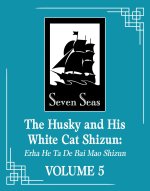
Code: 20746464
Evaluation of maize (Zea mays L.) inbred lines under heat stress and normal condition
by Manoj Kandel, Surya Kant Ghimire, Bishnu Raj Ojha, Jiban Shrestha
Master's Thesis from the year 2018 in the subject Biology - Botany, grade: A, , language: English, abstract: Twenty maize genotypes were tested in alpha-lattice design with two replications in research block of National Maize Rese ... more
- Language:
 English
English - Binding: Paperback
- Number of pages: 44
Publisher: Grin Publishing, 2018
- More about this

You might also like
-

Reiseführer Grünes Band
0 € -100 %
Give this book as a present today
- Order book and choose Gift Order.
- We will send you book gift voucher at once. You can give it out to anyone.
- Book will be send to donee, nothing more to care about.
More about Evaluation of maize (Zea mays L.) inbred lines under heat stress and normal condition
You get 127 loyalty points
 Book synopsis
Book synopsis
Master's Thesis from the year 2018 in the subject Biology - Botany, grade: A, , language: English, abstract: Twenty maize genotypes were tested in alpha-lattice design with two replications in research block of National Maize Research Program, Rampur, Chitwan from February to June, 2016 to evaluate maize inbred lines for their genetic components association among yield components and correlation and stress tolerance indices. Shorter ASI was found in RML-17, RML-57, RL-107, RL-140, RML-91 whereas more leaf area index in NML-2, RML-91, and RML-24 respectively. Inbred lines, RML-91, RML-17, RML-20, RL-140, RL-140, RML-91 and NML-2 were found lower tassel blast and leaf firing percentage respectively. Inbred lines, RML-76,RML-115,RML-4,RL-111 showed slower leaf senescence and RML-57, RL-101, RML-11, RL-107 showed significant higher value of SPAD chlorophyll content. Heritability and correlation analysis revealed that grain yield, number of kernel ear-1, silk receptivity, shelling percentage, thousand kernel weight plant and ear heights showed presence of additive gene effect and those traits direct could be used as direct selection to improve maize grain yield under heat stress condition. With attention to high negative correlation with anthesis silking interval, tassel blast, leaf firing with grain yield the minimum of anthesis silking interval, tassel blast and leaf firing were the most important index required further genotyping for development of thermo-tolerance lines. Cluster and PCA analysis revealed that cluster 4 genotype named as RL-140, RML-76, RML-40 and RML-91 were found to be tolerant to heat stress with higher value of grain yield and other desirable traits and lower leaf firing, Tassel blast and itermediate of anthesis-silking interval which were suitable for cultivation under heat stress condition.Based on stress tolerance indices and their correlation analysis, RML-91, RML-140 appeared as having high yield potential and low stress susceptibility under normal and heat stress condition.
 Book details
Book details
51.51 €
- Full title: Evaluation of maize (Zea mays L.) inbred lines under heat stress and normal condition
- Author: Manoj Kandel, Surya Kant Ghimire, Bishnu Raj Ojha, Jiban Shrestha
- Language:
 English
English - Binding: Paperback
- Number of pages: 44
- EAN: 9783668809529
- ID: 20746464
- Publisher: Grin Publishing
- Weight: 77 g
- Dimensions: 210 × 148 × 2 mm
- Published: 2018
Trending among others
-

Berserk Deluxe Volume 1
48.34 € -5 % -

Haunting Adeline
30.72 € -

Berserk Deluxe Volume 3
51.72 € -

Berserk Deluxe Volume 2
52.95 € -

Atomic Habits
15.97 € -15 % -

LEGO Star Wars Visual Dictionary Updated Edition
26.31 € -4 % -

House of Leaves
23.45 € -22 % -

Berserk Deluxe Volume 5
52.33 € -

Chainsaw Man, Vol. 15
10.44 € -23 % -

Powerless
11.97 € -8 % -

Harry Potter and the Prisoner of Azkaban (Minalima Edition)
41.68 € -

Cry Baby Coloring Book
11.46 € -

Hunting Adeline
31.84 € -

Iron Flame
16.28 € -19 % -

The Official Stardew Valley Cookbook
26.01 € -9 % -

White Nights
3.57 € -24 % -

JUJUTSU KAISEN V22
12.49 € -7 % -

Gravity Falls Journal 3
20.68 € -5 % -

Berserk Deluxe Volume 4
48.23 € -5 % -

Heaven Official's Blessing: Tian Guan Ci Fu (Novel) Vol. 2
22.11 € -

Dune Messiah
9 € -21 % -

Berserk Deluxe Volume 6
51.20 € -

Surrounded by Idiots
10.74 € -11 % -

Twisted Lies
9.82 € -24 % -

The 48 Laws of Power
26.11 € -4 % -

Twisted Love
9.82 € -24 % -

Twisted Games
9.82 € -24 % -

Bungo Stray Dogs, Vol. 8 (light novel)
16.58 € -

Dune
9.72 € -19 % -

Fourth Wing
10.23 € -15 % -

Heaven Official's Blessing: Tian Guan Ci Fu (Novel) Vol. 1
20.68 € -5 % -

Court of Thorns and Roses Paperback Box Set (5 books)
54.58 € -13 % -

A Little Life
17.50 € -

CHAINSAW MAN V14
11.26 € -14 % -

Berserk Deluxe Volume 10
58.78 € -

Dungeons & Dragons Essentials Kit (D&d Boxed Set)
26.62 € -

Court of Thorns and Roses
9.31 € -20 % -

King of Sloth
10.74 € -17 % -

Icebreaker
9.21 € -18 % -

Harry Potter and the Chamber of Secrets: MinaLima Edition
30 € -24 % -

Heaven Official's Blessing: Tian Guan Ci Fu Vol. 4
18.63 € -10 % -

Vagabond (VIZBIG Edition), Vol. 1
24.47 € -6 % -

Raising Mentally Strong Kids: How to Combine the Power of Neuroscience with Love and Logic to Grow Confident, Kind, Responsible, and Resilient Child
29.90 € -

48 Laws Of Power
18.12 € -10 % -

No Longer Human
16.58 € -

Court of Mist and Fury
9.41 € -21 % -

The Husky and His White Cat Shizun: Erha He Ta de Bai Mao Shizun (Novel) Vol. 5
20.17 € -5 % -

Twisted Series 4-Book Boxed Set
43.62 € -23 % -

Berserk Deluxe Volume 7
52.02 €
Osobný odber Bratislava a 2642 dalších
Copyright ©2008-24 najlacnejsie-knihy.sk Všetky práva vyhradenéSúkromieCookies



 21 miliónov titulov
21 miliónov titulov Vrátenie do mesiaca
Vrátenie do mesiaca 02/210 210 99 (8-15.30h)
02/210 210 99 (8-15.30h)